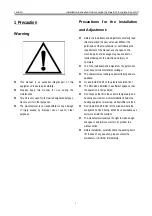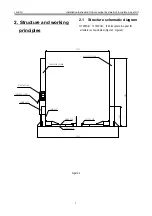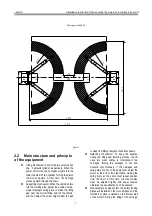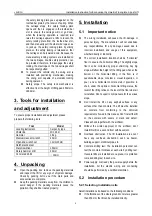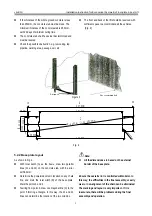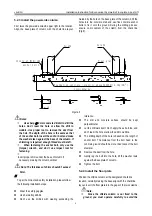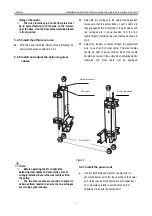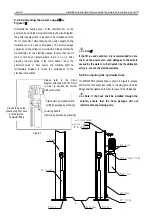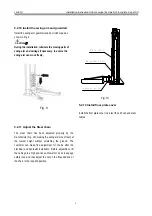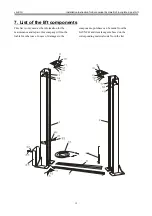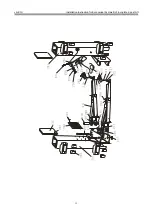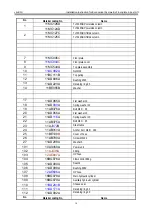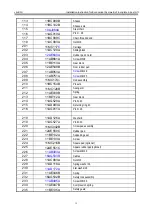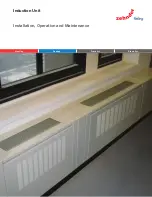
LAUNCH
Installation Instruction for Economical Symmetric Floor-plate 2-post Lift
4
the safety locking plate goes up against on the
toothed bar plate by the tension of spring. When
the carriage stops, the safety locking plate
opens and then is engaged in the toothed bar
slot to ensure the carriage will not go down;
when the lowering operation is required, just
raise the carriage upward a little to loosen the
safety locking plate from the toothed bar slot,
and then manually pull the steel wire rope so as
to jack up the safety locking plate by sliding
plate, so the safety locking is released so that
the carriage can be lowered down. Because the
manual safety locking systems are installed on
the two carriages, double safety protection can
be provided; therefore, to disengage the safety
locking, the steel rope on the two carriages shall
be respectively pulled.
z
To prevent the vehicle slip, the swing arm is
installed with positioning mechanism, making
the swing arm capable of automatic locking
during operation.
z
Safety scope: The safety lock mechanism is
effective from the height of lifting pad 450mm to
1900mm.
3. Tools for installation
and adjustment
To ensure proper installation and adjustment, please
prepare the following tools:
Tool Model
Leveling instrument
Carpentry type
Chalk line
Min 4.5m
Hammer 1.5kg
Medium crescent wrench
40mm
Open-end wrench set
11mm-23mm
Ratchet socket set
Flat screwdriver
150mm
Rotary hammer drill
20mm
Concrete drill-bit
¢
19mm
4. Unpacking
z
Open the packing box; remove the packing materials
and inspect the lift for any sign of shipment damage.
Check by packing list to see if the main parts and
accessories are complete.
z
Keep the packing materials away from the children to
avoid danger; if the packing materials cause the
pollution, they shall be treated properly.
5. Installation
5.1 Important
notice
z
The wrong installation will cause the lift damage or
personal injury. The manufacturer will not undertake
any responsibilities for any damage caused due to
incorrect installation and usage of this equipment,
whether directly or indirectly.
z
The correct installation location shall be “horizontal”
floor to ensure the horizontal lifting. The slightly slope
floor can be corrected by proper shimming. Any big
slope will affect the height of the lifting pad when at the
bottom or the horizontal lifting. If the floor is of
questionable slope, consider a visual inspection, or
pour a new horizontal concrete slab if possible. In
short, under the optimum horizontal lifting status, the
level of the lifting relies on the level of the floor where it
is installed. Don’t expect to compensate for the serious
slope.
z
Don’t install the lift on any asphalt surface or any
surface other than concrete. The lift must be installed
on concrete floor conforming to the minimum
requirement showed in this manual. Don’t install the lift
on the concrete with seams or crack and defect.
Please check together with the architect.
z
Without the written approval of the architect, don’t
install this lift on a second floor with basement.
z
Overhead obstruction: The lift installation area can’t
have any overhead obstruction, such as heater,
building support, electrical pipe, etc.
z
Concrete drilling test: The installation personnel can
test the concrete thickness at each site by drilling test.
If several lifts are installed at one place, it is preferred
to make drilling test in each site.
z
Power supply: Get ready the power supply before the
installation. All the electric wiring and connecting
should be performed by a certified electrician.
5.2 Installation
procedure
5.2.1 Selecting installation site
Select installation site based on the following conditions:
z
If the thickness of the whole ground concrete is greater
than 250mm, the lift can be installed directly.


